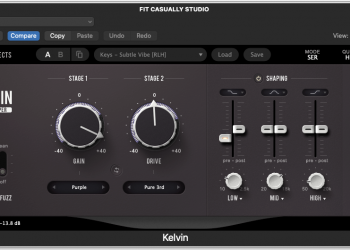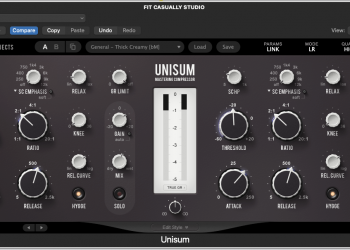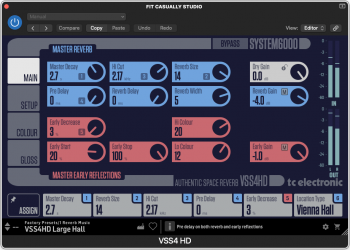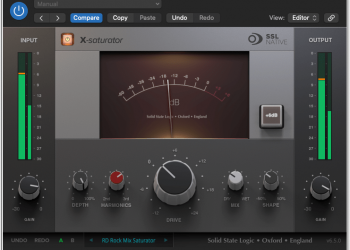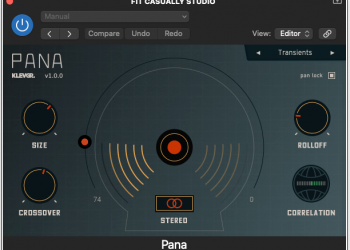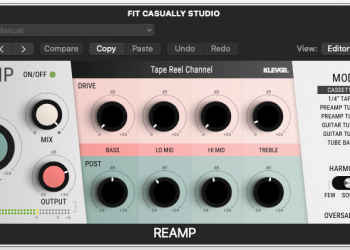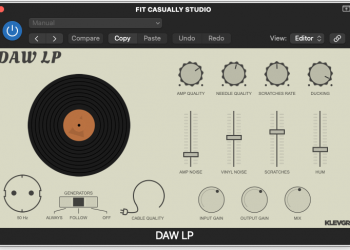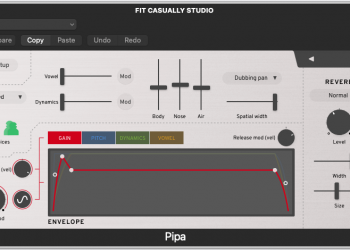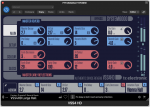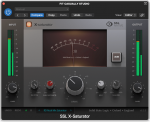Version 2.8.12
TONAL/TRANSIENT AUDIO SPLITTER + SPECIAL FX
The Ultimate Creative Tool
Physion is the first plug-in to use our ground-breaking Structural Effects technology — A new method for processing audio. With Physion, you can split a sound into its transient and tonal parts, independently manipulate them using Eventide’s world-class effects and then fuse them back together. With the ability to add effects and dynamic controls to the transient and tonal sections, you can produce a wide range of sounds, from the subtle to the extreme.
Features
Split audio into “Transient” and “Tonal” components
Radically re-shape a sound by soloing the Tonal and Transient channels. Tighten up drums by dropping the tonal section, or tune a guitar into an ambient sweep by losing the transients.
Split, modify and reassemble any sound
Fine-tune the split using the four “Structural Split” controls.
Six Transient effects available: Delay, Tap Delay, Dynamics, Phaser, Reverb, Gate + EQ
Seven Tonal effects available: Delay, Compressor, Pitch, Chorus, Reverb, Tremolo, EQ
Waveform display for clear tracking of Transient/Tonal audio in real-time
Artist presets from Richard Devine, Chris Carter, Suzanne Ciani, Joe Chiccarelli, John Agnello, Stewart Lerman, Steve Rosenthal, Kaitlyn Aurelia Smith and more
Videos: Eventide Physion Explained
Explore the Split

Smoothing
SMOOTHING controls the speed of the decision-making process, preventing it from making too fast a decision either way. This is useful for trimming out unwanted transient chirps or smoothing rough transitions.
Transient Decay
Turning up TRANSIENT DECAY preserves energy in the transient stream, further thickening up the transient tail as well as increasing the auto-swell on the tonal stream.
Focus
Adjust the FOCUS control to ‘fine tune’ the parsing of the sound based on contextual and musical desires. FOCUS forces the method to favor one stream over the other. Sliding FOCUS toward tonal will result in a more staccato transient stream. Sliding FOCUS toward transient will result in heavier transient tails along with tonal auto-swell. Extreme settings will push the entire signal to either the transient or tonal stream. The FOCUS control can be used to make subtle modifications like de-essing, de-reverberating, or reducing pick noise by adjusting transient and tonal gain.
Source Type
Selecting SOURCE TYPE sets the under-the-hood expert tunings that prime the analysis and decider for a natural sounding split of a given source.
Explore the Effects – Six transient effects

Delay — A standard Delay echo effect with Tempo Sync capability and low and high-cut filtering
Tap Delay — A multi-tap delay-line with Tempo Sync capability. Useful for rhythmic delays, wacky comb filtering, volume swells, or unique reverberant sounds.
Dynamics — A combined Compressor/Limiter and Expander/Gate (function is determined by Ratio control)
Phaser — A classic multi-stage allpass based Phaser effect, which can be controlled via LFO or Envelope
Reverb — A room Reverb designed with high echo density, imparting a fast and smooth build-up of reflections. This pairs nicely with transient sounds to create a sense of space without obvious echo slap back.
Gate + EQ — A Gate followed by a 3-band overdrive-able EQ
Seven Tonla Effects
Compressor — A standard Compressor/Limiter
Chorus — Multi-voiced chorus with randomized modulation
EQ — A 3-band overdrive-able EQ
Delay — A standard Delay echo effect with Tempo Sync capability, modulation, and low and high-cut filtering
Reverb — A large space Reverb designed with lower echo density (compared to Transient Reverb) and targeted high modal density with little to no modulation to avoid a chorusing sound on the tails. This allows the tonal audio to breathe in the space, yet evolve into dense pad-like reverberant tails.
PitchShift — A 3-voice Pitch Shifter with +/- 1 octave shift per voice and an overall fine tuning control. Useful for retuning drums, creating harmonies, or micropitch chorusing/double-tracking all without transient slap back or smearing.
Tremolo — A standard Tremolo effect which is driven by an LFO in (optional) combination with the Envelope of the plug-in’s input
Read: Eventide Physion Manual
Images accompanying text are Credited to Eventide





